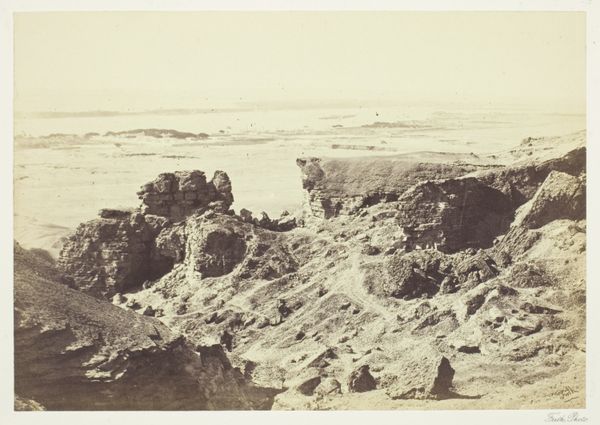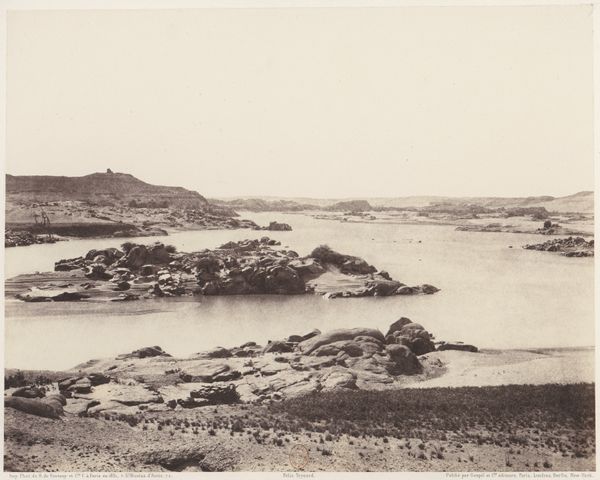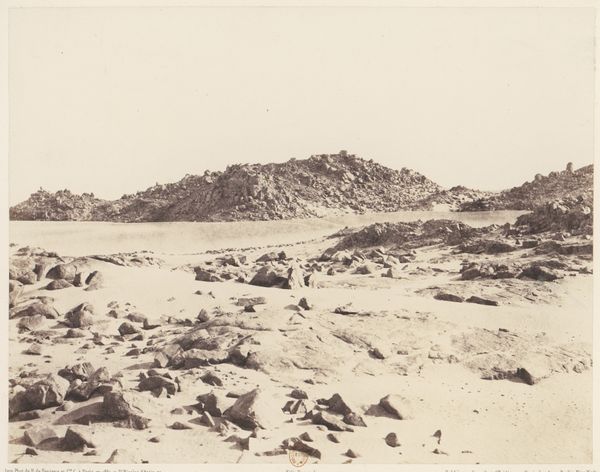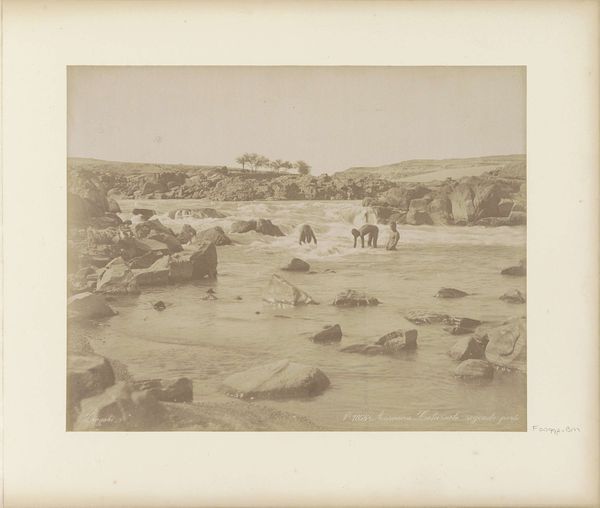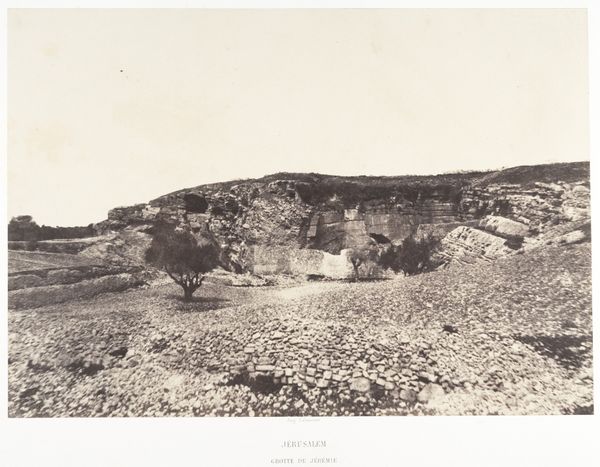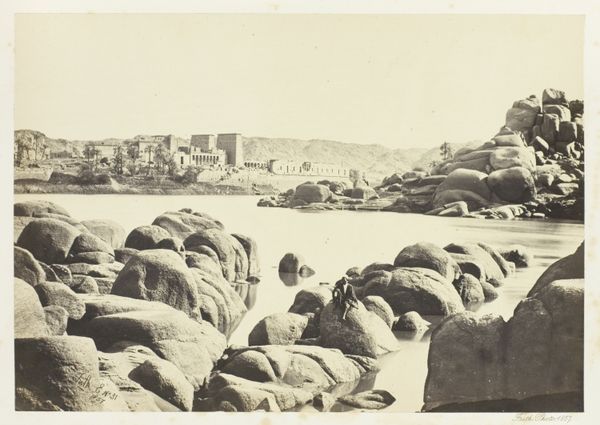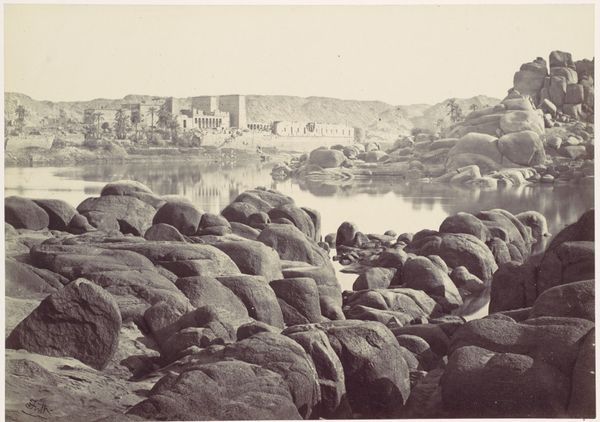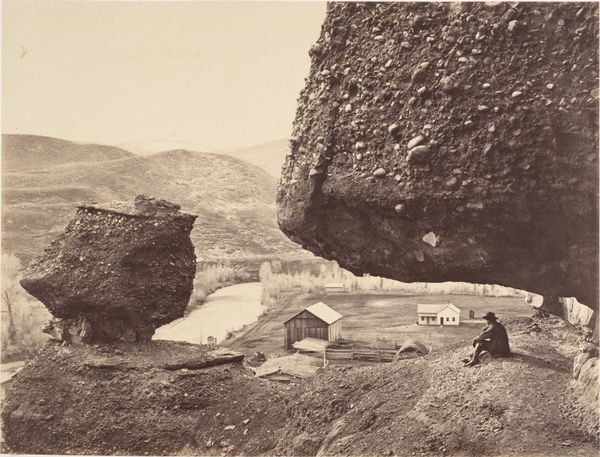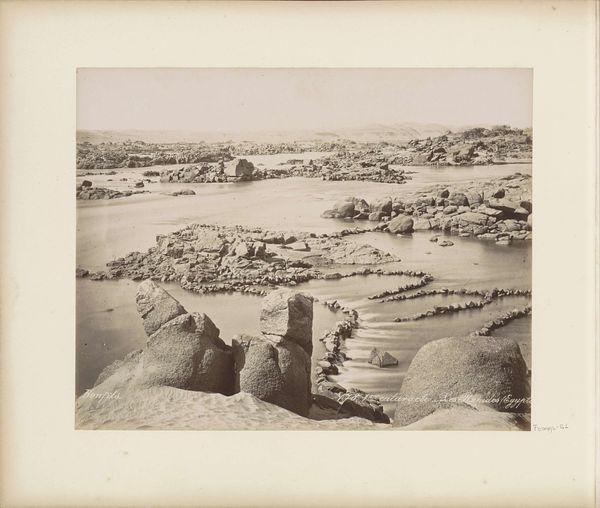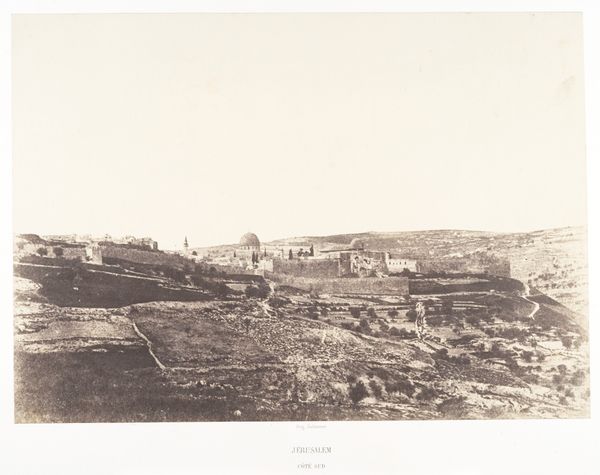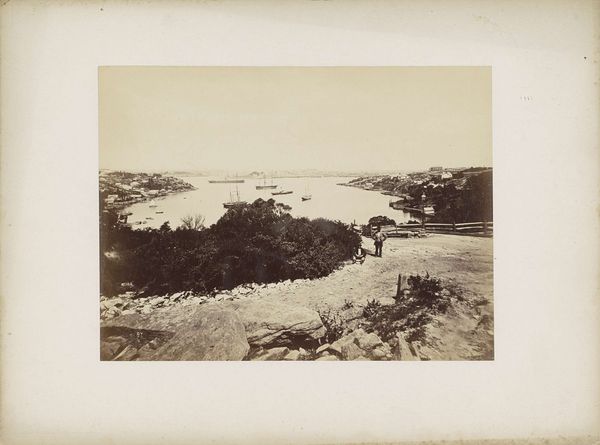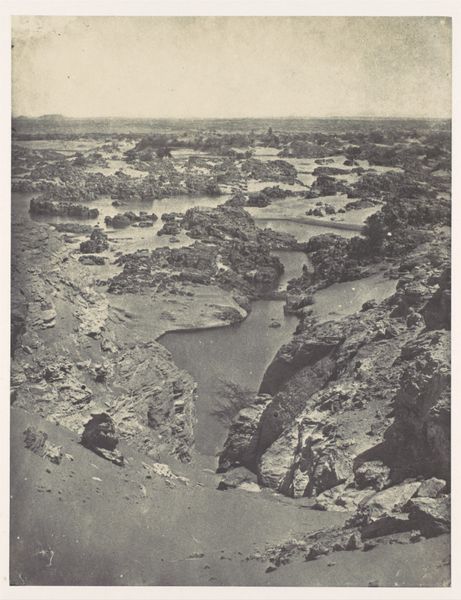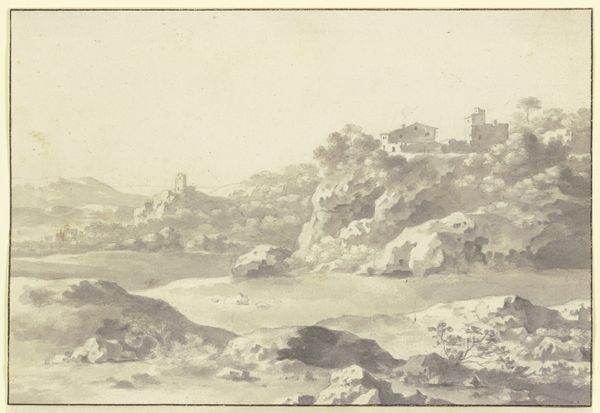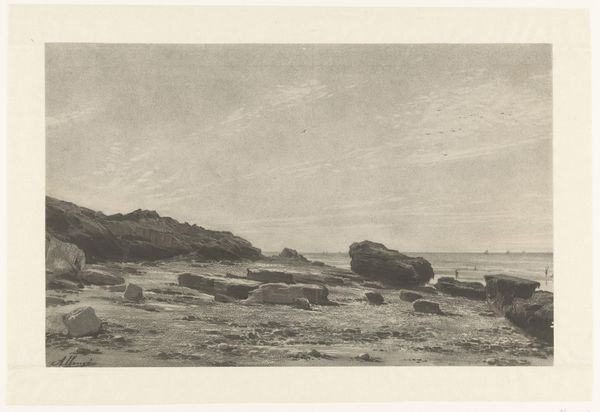
print, photography
# print
#
asian-art
#
landscape
#
outdoor photography
#
photography
#
cityscape
#
realism
#
building
Dimensions: Image: 6 5/8 × 9 1/4 in. (16.9 × 23.5 cm)
Copyright: Public Domain
Curator: This photograph, entitled "View on Koolangsoo Island, Amoy", was taken by John Thomson in 1869. It’s currently housed in the Metropolitan Museum of Art. Editor: The sepia tones and distant cityscape create such a sense of serenity, but also one of immense age. The large rocks in the foreground almost feel like silent observers. Curator: That's a powerful reading. I think Thompson positions us to contemplate that timelessness. The composition pulls the eye between the close, rugged boulders and the buildings in the distance. The image resonates as the record of British colonialism and mercantile activity at the time. Editor: You're right, the structures in the background introduce the theme of globalization into the setting. Did Thompson ever explore how photography and commerce influenced representation? Curator: Yes, he was very interested in how imagery shapes perception and understanding. The rocky shapes could reference both Western Romantic notions of landscape and local symbolisms connected with rock and permanence, or even Daoist ideals of naturalness and longevity. Editor: This duality strikes me deeply; Thompson’s photograph is a record, but also it actively performs the very intercultural exchange that constitutes its subject matter. He doesn't simply document a landscape. Curator: Absolutely, photography became a powerful tool for representing cultures to foreign audiences, shaping political and economic realities. It also invites many viewers to look into that past and recognize the long roots of globalization. Editor: Thinking about this image, I can't help but reflect on the ethics of representation—the responsibility that comes with translating cultures through images. Curator: And how we can become more attuned to the visual cues within such photographs. Appreciate both the artistry and cultural context. Editor: Indeed, to learn from the past rather than simply gazing at it. Thank you for the perspective.
Comments
No comments
Be the first to comment and join the conversation on the ultimate creative platform.
